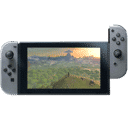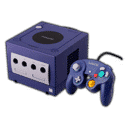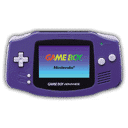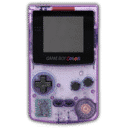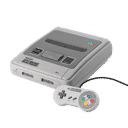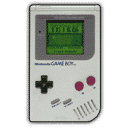
Summary:
Nintendo’s leadership has been candid about a reality many players already feel: making modern games takes longer, costs more, and demands bigger teams and tighter coordination. For Switch 2, Shuntaro Furukawa explained to investors that development periods are lengthening and that it’s tougher to keep a quick rhythm of brand-new releases coming one after another. That doesn’t mean quiet months will be empty. Nintendo plans to keep momentum by leaning on a few smart levers at once: strong backward compatibility with the huge Switch library, continued updates to evergreen hits that millions already own, and a broader third-party slate to fill the calendar while first-party teams take the time they need. For players, that translates to a smoother transition into Switch 2 with fewer dead zones: your existing games follow you forward, many of them receive fresh attention, and new releases arrive when they’re ready instead of being rushed. In short, the strategy is about balance—bridging longer build times with value you can play today.
Why development is taking longer on Switch 2
We’re in an era where raising the bar visually and technically adds weeks, then months, to every milestone. Higher resolution assets, more complex physics, denser worlds, and refined animation pipelines all stack up. Teams spend more time planning, prototyping, and integrating systems because expectations are higher across the board—especially when players compare results to PS5 and Xbox Series X|S. Switch 2 aims to sit comfortably in that landscape, which means Nintendo’s first-party teams are building with new targets in mind. Instead of sprinting to meet a fixed annual slot, they’re timing releases around quality and polish. That shift ripples into how we see the calendar: fewer brand-new titles bunched together and more emphasis on games with long tails and updates that keep communities active while the next showcase project bakes.
What Furukawa actually said—and why it matters now
Investors heard it directly: development costs are higher, periods are longer, and keeping a rapid flow of fresh releases is harder than before. Rather than ignore the reality, Nintendo framed a plan to maintain momentum: keep people playing across generations, spotlight evergreen favorites, and pace upcoming tentpoles. That honesty helps set expectations and, frankly, invites us to rethink what a “slow month” looks like. If you can boot a Switch 2 and immediately jump into your Switch library, pick up right where you left off, and see support for existing hits, the pressure to ship something brand-new every few weeks fades. The message is simple: quality first, cadence supported by compatibility and updates.
Backward compatibility as a bridge between generations
Backward compatibility changes the launch math. When a library you’ve built over years continues to work, upgrading your hardware stops feeling like a reset and starts feeling like an upgrade to the way you already play. That continuity keeps communities intact and lowers the barrier for anyone returning from a break. On Switch 2, support for original Switch games means day-one value without waiting for a specific new release window. It also lets Nintendo stagger tentpoles without leaving the schedule bare, because the “playable today” list is massive. The bonus? Families sharing a console can jump between old favorites and new releases with zero friction, smoothing the handoff between generations and keeping the ecosystem lively.
Enhanced experiences without starting from scratch
Even when a studio isn’t ready to ship a full sequel, it can offer performance or feature upgrades that make returning to a known world feel fresh. That approach extends the life of beloved games and creates a middle lane between “nothing new” and “brand-new.” Players get meaningful improvements, teams buy time, and the library becomes more valuable. Think cleaner load times, steadier frame rates, and small quality-of-life tweaks that fit naturally into a busy season. It’s a practical way to respect your time and your purchases while bigger projects cook in the background.
Why it helps adoption
When someone buys Switch 2 and can immediately enjoy their existing Switch library, the perceived value skyrockets. That encourages earlier upgrades, grows the active user base faster, and gives developers a larger audience to target. A healthy early install base, in turn, supports riskier creative bets, which is exactly what we want as development timelines stretch.
Evergreen updates: keeping momentum without constant new launches
Evergreen games are the engine that keeps a platform humming between tentpoles. Regular updates, seasonal events, DLC drops, and live-ops-style refreshes give us reasons to revisit favorites and make it easier to recommend the platform to friends. Nintendo is leaning into that DNA: think of the way Mario Kart 8 Deluxe, Splatoon, and other staples held attention for years on Switch. The playbook for Switch 2 is similar, only now the intent is explicit—use updates and support across generations to smooth gaps while teams craft the next surprise. That steadiness matters more than ever when projects are bigger and more complex, because it keeps excitement steady instead of spiky.
How updates shape our libraries
A steady drip of improvements nudges us to reinstall games we loved, sample new modes, or chase limited-time rewards. It also rewards late adopters: even if you missed the original hype cycle, you can jump in now and still find a lively community. For families, it means a favorite can keep evolving without the cost of buying something brand-new every month. That gentle, ongoing motion is how a platform stays top-of-mind between marquee reveals.
How higher fidelity and complexity reshape schedules
Every leap in fidelity forces teams to rethink pipelines. Asset creation expands, testing matrices balloon, and optimization takes longer because there’s simply more surface area to polish. Even seemingly small features—like improved haptics or camera behavior—can ripple across code and design. Nintendo’s studios are famously iterative; they prototype broadly and then refine until ideas “click.” On modern hardware, those loops are deeper and more demanding, which is exactly why timelines stretch. The upside is obvious: when a Nintendo project lands, it tends to feel tuned in a way few studios can match. The trade-off is patience, buffered by compatibility and updates to keep us engaged.
Comparisons with other platforms are part of the equation
Players naturally compare Switch 2 experiences with what they see on PS5 and Xbox Series X|S. That sets a bar for texture detail, effects, and performance stability, even for stylized games. Meeting those expectations—while preserving Nintendo’s playful feel and pick-up-and-play comfort—takes care. Longer dev windows aren’t a weakness here; they’re the cost of delivering something that feels right in the hands.
The role of third-party partners during longer first-party cycles
When first-party teams are heads-down, the calendar depends on partners. Nintendo has highlighted a larger third-party slate on Switch 2, giving the platform breath between internal launches. For us, that’s good news: more varied genres, more experiments, and more cross-platform hits arriving in sync. It also means the early years of Switch 2 can feel full even if Nintendo itself spaces its tentpoles. Strong partner support was a major reason the original Switch stayed vibrant; repeating that pattern while first-party teams take their time is a smart, proven move.
Why players benefit from a broader slate
Variety keeps discovery alive. While we wait for the next must-have from Nintendo EPD, we can rotate through indie standouts, mid-sized AA gems, and big releases that run well on the new hardware. That mix helps everyone find something to love each season—and it prevents the calendar from turning into a two-or-three-franchise loop.
Managing fan expectations between tentpoles
Expectation management is half the battle. Clear signals—like “this classic is getting a meaningful update” or “this series returns in the second half of the year”—help us plan purchases and tame hype cycles. Nintendo’s messaging around longer dev periods shows an understanding that transparency beats surprises that slip. When the company points to compatibility, evergreen support, and partner releases as the glue between tentpoles, it sets a healthier rhythm for everyone: developers get the runway they need, and we get predictable value through the year.
Pushing projects out the door just to fill a gap usually hurts in the long run. Better to be upfront, ship when it’s ready, and backfill the schedule with updates and cross-gen perks. That approach preserves trust and keeps the conversation focused on what’s fun to play right now, not just what’s next.
Practical wins for players who stick with the Switch library
Backward compatibility means your purchases keep paying off. If you’ve built a library over the last eight years, those games roll forward. That makes moving to Switch 2 feel less like starting from zero and more like unlocking a booster pack for your hobby. It also makes gifting easier—hand-me-down Switch units can stay in the family while primary play shifts to Switch 2. Add in the likelihood of selective enhancements and updates to fan favorites, and the value proposition gets stronger. You’re not waiting in the cold; you’re playing today while the next wave takes shape.
Ways to make the most of compatibility
Rotate through backlog hits you never finished, then keep an eye out for performance-tuned editions. If you play with kids, lean on family staples that still get seasonal refreshes. And if you’re new to Nintendo altogether, compatibility turns Switch 2 into an instant anthology—thousands of hours ready to go on day one.
What this means for release cadence in 2025–2026
Expect a pattern: a major first-party release, then a period carried by third-party launches, updates to evergreen titles, and occasional enhanced versions of older hits—followed by another first-party tentpole. That rolling cadence avoids feast-or-famine swings and keeps attention distributed across genres. The company’s investor messaging suggests this isn’t a stopgap; it’s the operating rhythm while teams tackle bigger, more ambitious projects designed to live for years. If you remember how Mario Kart, Animal Crossing, and Zelda anchored entire seasons on Switch, you’ve seen the template. Now extend it with smoother tech and broader partner help.
Spacing the calendar gives QA and optimization room to breathe. It also allows marketing to focus on fewer, bigger moments instead of crowding the spotlight. The result: launches that feel like events, with less of the whiplash that comes from weekly “must-plays.”
How we can prepare: buying decisions, backlogs, and upgrades
Practical tip: treat your Switch library like a garden. Curate a shortlist of games worth revisiting on Switch 2, especially ones likely to benefit from steadier performance. When new releases land, pick them based on fit, not FOMO. Backlog time is not wasted time; it’s the bridge that makes the new system feel rich from day one. If you’re considering an upgrade, compatibility makes the choice easier—your library and saves keep their value, your accessories and habits carry over, and your next purchase can be guided by interest, not the pressure to justify the hardware immediately.
Families and co-op players get the best of both worlds
Local co-op staples and kid-friendly hits don’t stop being fun just because a new box arrives. The fact that Switch titles remain in play means living-room routines don’t need to change overnight. You can stretch value across multiple rooms and multiple ages while still enjoying Switch 2 exclusives when they arrive.
Risks to watch: delays, resource allocation, and communication
Longer timelines come with trade-offs. Slip-risk increases as projects scale, and resource planning gets trickier when multiple teams converge on the same launch windows. That’s where communication matters most. Regular investor updates and clear player-facing notes about what’s being supported—and when—keep confidence high. Third-party balance is another variable; if a partner slate thins, gaps can widen. The counterweight is Nintendo’s history of shipping polished experiences and supporting its hits for the long haul. With compatibility as a safety net, even a delayed tentpole doesn’t leave us stranded.
Why patience pays off
We’ve all played games that could’ve used a few more months in the oven. Choosing to wait protects the magic. When the next Switch 2 showcase title lands and feels instantly right—smooth inputs, confident art direction, zero jank—that’s the dividend of letting the schedule breathe and using compatibility to keep the ecosystem warm meanwhile.
Pacing, patience, and the upside of polish
Longer development cycles aren’t a detour; they’re the new road. Nintendo’s plan acknowledges that reality without sacrificing momentum. Backward compatibility keeps your library alive, evergreen updates keep week-to-week play interesting, and third-party support fills the gaps while first-party creators aim high. As players, we get choice, continuity, and fewer compromised launches. The win is simple: games arrive when they’re ready, and we’ve got plenty to play in the meantime.
Conclusion
Switch 2 development will take longer because the bar is higher, but the platform won’t stall. Nintendo’s strategy—compatibility, evergreen support, and partner variety—keeps the calendar healthy while ambitious projects mature. That balance turns waiting into playing, protects quality at launch, and makes the upgrade feel worthwhile on day one. Patience isn’t just tolerated; it’s rewarded with better games and a stronger library that moves with us.
FAQs
- Will my existing Switch games work on Switch 2?
- Yes. Nintendo has publicly stated that Switch software is playable on the successor, ensuring your library carries forward.
- Why are Switch 2 games taking longer to release?
- Higher fidelity, bigger scopes, and more complex pipelines extend schedules. Nintendo confirmed development periods are longer and costlier than before.
- How will Nintendo keep momentum between big releases?
- By combining backward compatibility, updates to evergreen titles, and a broader third-party slate to fill the calendar between first-party tentpoles.
- Will there be upgraded versions of older Switch games?
- Expect selective enhancements or editions optimized for Switch 2, alongside broad compatibility that lets you play your existing titles.
- Is now a good time to upgrade if I have a large Switch library?
- Yes. Compatibility means instant value on day one, and you’ll benefit from improved performance while waiting for new exclusives.
Sources
- Q&A Summary (English Translation of Japanese Original), Nintendo Investor Relations, May 9, 2025
- Corporate Management Policy Briefing (Switch 2 software lineup and strategy), Nintendo Investor Relations, November 5, 2025
- Nintendo Switch software to be playable on successor device, Reuters, November 6, 2024
- The Nintendo Switch 2 supports original Switch cartridges, The Verge, January 16, 2025
- Nintendo says it will still ship games for Switch 1, talks about balance with game releases, Nintendo Everything, November 5, 2025
- Nintendo still plans on developing Switch games despite resources shifting to Switch 2, Automaton, November 7, 2025
- Nintendo president admits Switch 2 game development takes longer, My Nintendo News, November 7, 2025


